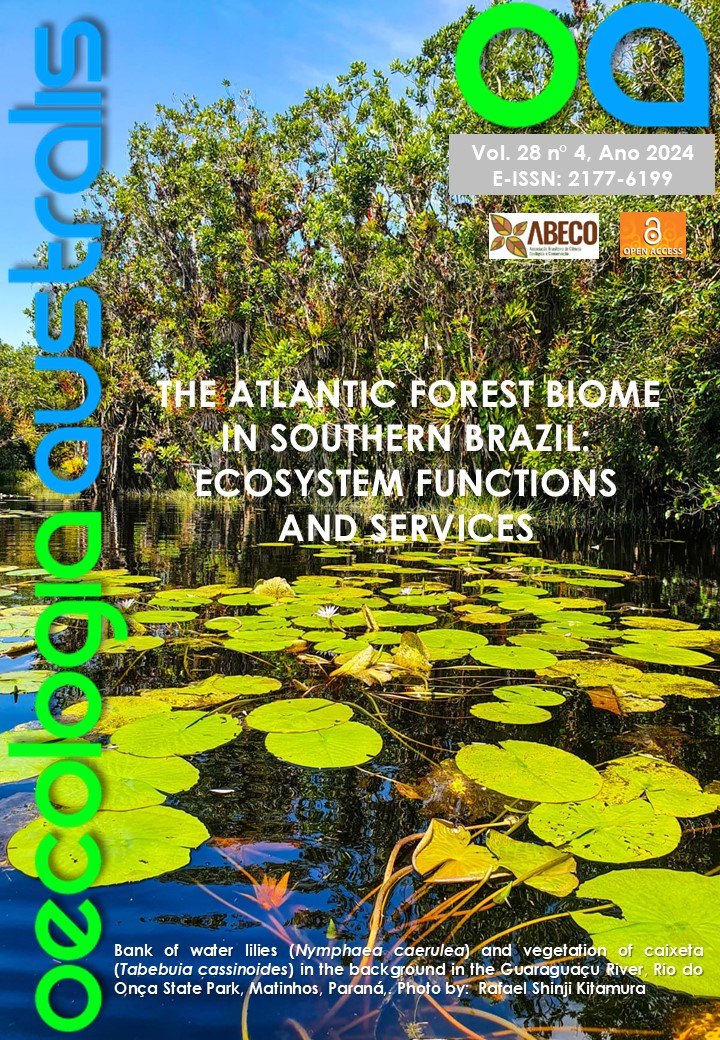DRIVERS OF SOC STOCK IN NATURALLY RESTORED SUBTROPICAL FORESTS AND MONOCULTURES OF NON-NATIVE TREES
Species richness, forest age, and litter affect SOC stock
DOI:
https://doi.org/10.4257/oeco.2024.2804.05Abstract
In subtropical landscapes, forested areas previously occupied by agriculture have been naturally restored or planted with non-native species monoculture. Those two strategies are important for sequestering carbon in biomass and soil. However, the effects of plant diversity on soil carbon stock are still a matter of debate. The balance between carbon input and output processes can determine the potential for soil carbon storage. Here, we investigated if naturally restored subtropical forests differ from planted tree monocultures (Eucalyptus grandis W. Hill ex Maiden and Pinus elliottii Engelm) in terms of soil carbon stock, and whether factors such as richness, forest age, litter production, and quality (C:N ratio and lignin content) can drive soil organic carbon (SOC) stocks in these forests. The most richness and the old natural fragment had higher SOC stock, and natural fragments had a higher litter production but a lower litter C:N ratio than monocultures. Monocultures did not differ in richness, SOC, litter production, and C:N ratio. Forest age and richness has a positive effect on the SOC stock, while the litter C:N ratio had a negative effect. Our findings indicate that, even in small forest fragments, the higher richness associated with the longer time of natural regeneration drives soil C storage. So, our results highlight the lower potential of forest plantations in restoration actions aimed at SOC stock recovery, reinforcing policies that encourage natural forest regeneration.


